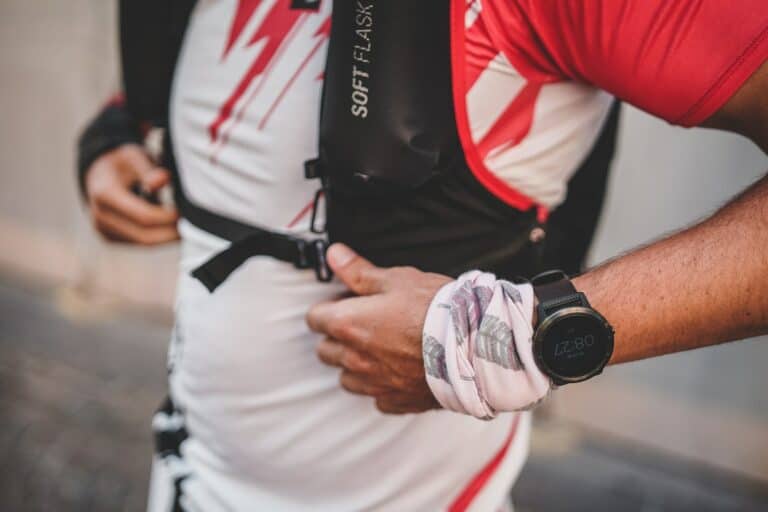Trail running, a thrilling adventure that immerses you in the heart of nature, offers an exhilarating escape from the ordinary. Regardless of your experience level, grasping the significance of cultivating the right posture and technique is pivotal. It not only elevates your performance but also acts as a safeguard against injuries. In this extensive manual, we’ll explore the realm of improving trail running posture, incorporating vital posture techniques for trail enthusiasts and the art of maintaining proper running form.
Why Trail Running Posture Matters

Before we dive into the nitty-gritty of posture techniques, let’s first understand why trail running posture is of utmost importance.
1. Efficiency in Trail Running
Efficiency in trail running is all about maximizing your energy output and minimizing wasted effort. Maintaining a good posture allows your body to move with the least resistance, enabling you to cover longer distances and conquer challenging terrains more effectively.
2. Injury Prevention
Proper posture is not just about speed; it’s also about safety. Trail runners are susceptible to various types of injuries, and many of these can be prevented or mitigated with the right posture. When you maintain a balanced form, you reduce the strain on your joints and muscles, lowering the risk of injury.
Key Elements of Proper Trail Running Posture
To achieve the benefits of efficient and injury-free trail running, you need to understand the key elements of proper trail running posture.
Alignment of Head, Shoulders, and Hips
Imagine a straight line connecting your head, shoulders, and hips. This alignment is essential for reducing unnecessary strain on your body. When your head is in line with your shoulders and hips, you distribute your weight more evenly, reducing the risk of injury.
Core Engagement
Engaging your core muscles is like having a built-in support system. It stabilizes your spine and pelvis, allowing you to maintain good posture even on challenging terrain. A strong core is crucial for technical trails and steep hills.
Arm Swing
Your arms play a significant role in maintaining forward momentum. Keep them relaxed and swinging naturally as you run. This arm movement not only provides balance but also aids in propulsion and balance.
Foot Strike
The way your feet hit the ground matters. Aim for a mid-foot strike rather than a heel strike. This reduces the impact forces on your joints and makes your strides more efficient.
Techniques to Improve Trail Running Posture

Now that we’ve covered the key elements let’s explore practical techniques to improve your trail running posture.
Slight Forward Lean
Maintaining a slight forward lean is essential for running uphill. It helps to keep your center of gravity over your feet, preventing you from falling backward. However, be cautious not to lean too far forward, as it can strain your lower back.
Running Tall
When running downhill, it’s crucial to maintain good posture. Instead of hunching over, focus on running tall. This keeps your center of gravity in check and helps you maintain momentum. Keep your arms close to your body for balance.
Quick Strides on Downhills
On steep downhills, quick strides can help you control your speed and maintain momentum. Shorter strides and quick, controlled foot placements reduce the risk of overstriding and falling.
Power Hiking on Steep Hills
For extremely steep hills, consider power hiking rather than running. This technique minimizes the impact on your legs and conserves energy.
Efficient Running Form
Efficient running form entails landing lightly and quietly on the trails, reducing the impact forces. It’s about taking shorter strides on technical terrain and longer strides on flat ground. Tailor your technique to the terrain for maximum efficiency.
Injury Prevention and Practical Tips

Injury prevention is a top priority for every trail runner. Here are some practical tips to ensure your safety:
Cross-Training
Engaging in cross-training exercises can help improve your trail running posture. Activities such as single-leg squats, hill work, and using trekking poles can strengthen the muscles required for better posture.
Related Reading
Learning from experienced trail runners and exploring additional resources can deepen your understanding of posture techniques and their benefits. Reading about the experiences of elite runners can provide valuable insights.
Final Thoughts: Improving Trail Running Posture:
Enhancing your trail running posture and adopting the right running form is a journey that demands patience and practice. Keep in mind that maintaining excellent posture can greatly elevate your running performance and, most importantly, minimize the risk of injuries.
As you set out on your trail running endeavors, always consider the fundamental aspects of posture and the methods to refine it, along with practical tips for injury prevention. By weaving these principles into your running routine, you’ll not only evolve into a more efficient and proficient trail runner but also guarantee your safety and enduring presence in this thrilling sport.
Trail running technique is all about honing your experience. With proper form, every step becomes a chance to relish, whether you’re conquering rugged terrains, navigating technical trails, or simply basking in the tranquility of the great outdoors.
Now, step onto the trails with confidence, aware that your trail running technique is primed for success. Happy running!
